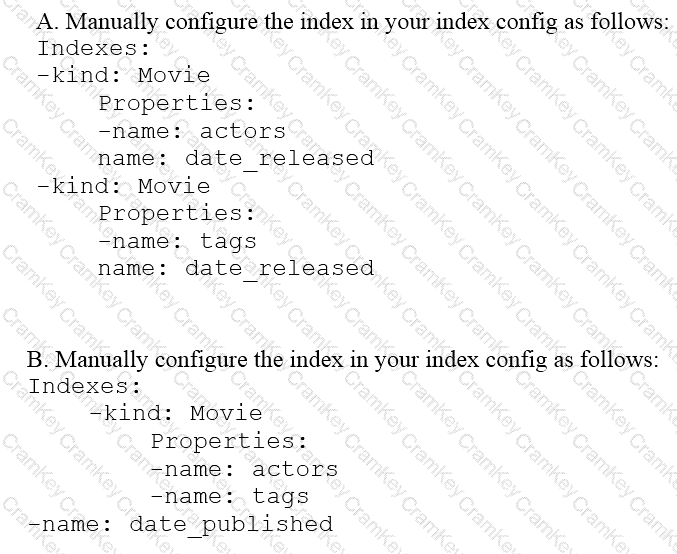| Exam Name: | Google Professional Data Engineer Exam | ||
| Exam Code: | Professional-Data-Engineer Dumps | ||
| Vendor: | Certification: | Google Cloud Certified | |
| Questions: | 374 Q&A's | Shared By: | woody |
You are designing the database schema for a machine learning-based food ordering service that will predict what users want to eat. Here is some of the information you need to store:
The user profile: What the user likes and doesn’t like to eat
The user account information: Name, address, preferred meal times
The order information: When orders are made, from where, to whom
The database will be used to store all the transactional data of the product. You want to optimize the data schema. Which Google Cloud Platform product should you use?
Your company produces 20,000 files every hour. Each data file is formatted as a comma separated values (CSV) file that is less than 4 KB. All files must be ingested on Google Cloud Platform before they can be processed. Your company site has a 200 ms latency to Google Cloud, and your Internet connection bandwidth is limited as 50 Mbps. You currently deploy a secure FTP (SFTP) server on a virtual machine in Google Compute Engine as the data ingestion point. A local SFTP client runs on a dedicated machine to transmit the CSV files as is. The goal is to make reports with data from the previous day available to the executives by 10:00 a.m. each day. This design is barely able to keep up with the current volume, even though the bandwidth utilization is rather low.
You are told that due to seasonality, your company expects the number of files to double for the next three months. Which two actions should you take? (choose two.)
You work for a manufacturing plant that batches application log files together into a single log file once a day at 2:00 AM. You have written a Google Cloud Dataflow job to process that log file. You need to make sure the log file in processed once per day as inexpensively as possible. What should you do?
You are deploying a new storage system for your mobile application, which is a media streaming service. You decide the best fit is Google Cloud Datastore. You have entities with multiple properties, some of which can take on multiple values. For example, in the entity ‘Movie’ the property ‘actors’ and the property ‘tags’ have multiple values but the property ‘date released’ does not. A typical query would ask for all movies with actor=

